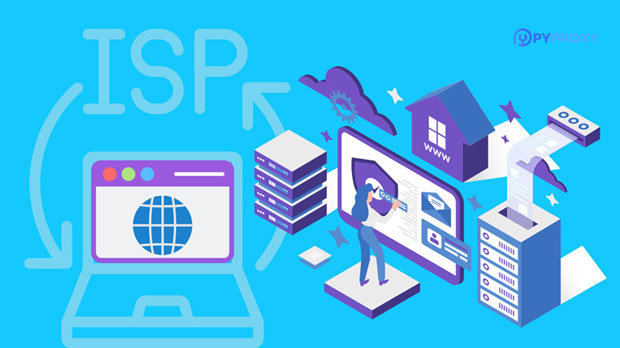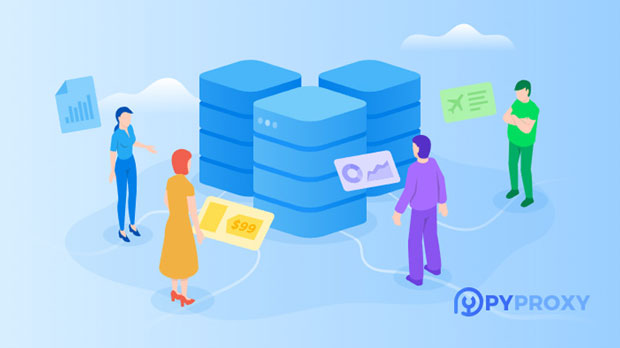What is SOCKS5 and how to use SOCKS5 proxy properly?
SOCKS5 is an internet protocol that facilitates the transmission of data between clients and servers through a proxy. As the fifth version of the SOCKS protocol, it provides a flexible, secure, and reliable solution for routing internet traffic. Unlike traditional HTTP proxies, SOCKS5 supports various types of traffic, such as web browsing, file transfers, and even online gaming. It operates by handling data at a lower level in the OSI model, enabling compatibility with different protocols and ensuring a high level of anonymity. Correctly using socks5 proxies allows users to enhance their privacy, improve security, and bypass restrictions. In this article, we will explore what SOCKS5 is and how to effectively utilize it. What is SOCKS5? A Detailed OverviewSOCKS5, or Socket Secure version 5, is an advanced internet protocol designed to route network traffic through a proxy server. Its primary function is to relay data between a client (such as your computer or mobile device) and a server, ensuring that the client's IP address remains hidden. SOCKS5 is built on a more flexible architecture compared to its predecessors (SOCKS4 and SOCKS3), providing enhanced security, better authentication methods, and support for a wide range of protocols.Unlike standard HTTP proxies that only support web browsing, SOCKS5 works at a lower level, providing support for various types of traffic such as FTP (File Transfer Protocol), P2P (peer-to-peer), and even VoIP (Voice over IP) applications. This versatility makes SOCKS5 a preferred choice for users who require an all-encompassing proxy service.How SOCKS5 WorksSOCKS5 works by accepting network requests from a client, forwarding those requests to the destination server, and then passing the response back to the client. This creates an intermediary layer between the client and the server, which effectively hides the client's IP address, ensuring privacy and anonymity.What sets SOCKS5 apart from other proxy types is its ability to route traffic across different protocols, ensuring that various types of data can flow smoothly without issue. The SOCKS5 protocol does not inspect or alter the data passing through it, unlike HTTP proxies, which sometimes modify content.Additionally, SOCKS5 supports advanced authentication methods, such as username and password, allowing users to secure their proxy connection. The flexibility of SOCKS5 makes it suitable for a wide range of online activities, from accessing restricted content to enhancing online privacy.Benefits of Using SOCKS51. Improved Privacy and AnonymityOne of the primary advantages of SOCKS5 is its ability to maintain user anonymity. When you connect to a socks5 proxy server, your original IP address is hidden, and the server's IP address is shown instead. This helps protect your identity and makes it more difficult for third parties to track your online activities.2. Bypassing Geographical RestrictionsSOCKS5 can be used to bypass geographical restrictions imposed by websites or services. For instance, if a service is restricted to certain regions, you can connect to a SOCKS5 server located in a region where the service is available, granting you access. This is particularly useful for streaming services, online gaming, or accessing content that may be blocked in your country.3. Support for Multiple ProtocolsUnlike HTTP proxies that are limited to web traffic, SOCKS5 supports a wide variety of protocols, including FTP, SMTP (Simple Mail Transfer Protocol), and even P2P file sharing. This makes it a versatile solution for users who require access to multiple types of online services.4. Enhanced SecuritySOCKS5 supports secure authentication, allowing you to protect your proxy connection with a username and password. This reduces the likelihood of unauthorized access to your connection, providing an additional layer of security. Additionally, SOCKS5 does not modify the data passing through it, ensuring that your data remains unaltered.How to Correctly Use SOCKS5 ProxyUsing SOCKS5 correctly is crucial for ensuring a smooth and secure internet experience. Below are the key steps to setting up and using SOCKS5 proxies effectively:1. Choose a Reliable SOCKS5 Proxy ProviderBefore you can use a SOCKS5 proxy, you must obtain access to a reliable proxy server. Many service providers offer SOCKS5 proxies, so it's important to choose one that provides good performance, security, and reliability. Keep in mind that free proxy services often come with limitations, such as slower speeds or higher risks of data interception.2. Configure SOCKS5 in Your Device or ApplicationOnce you've chosen a provider and received your SOCKS5 proxy details, you need to configure the proxy settings on your device or application. SOCKS5 proxies can be configured in browsers (e.g., Firefox, Chrome), torrent clients (e.g., qBittorrent, uTorrent), and even gaming platforms. To configure SOCKS5, you'll typically need the following information:- Proxy server address (IP address or domain name)- Proxy port (usually 1080)- Username and password (if authentication is required)The process for configuring SOCKS5 will vary depending on the device or application you're using. Always ensure you follow the specific setup instructions provided by your proxy provider for optimal results.3. Test the Proxy ConnectionOnce you've configured the SOCKS5 proxy, it's important to test the connection to ensure everything is working correctly. You can check your IP address through online tools to confirm that your real IP address is hidden and the proxy server's IP is visible. Additionally, make sure the services you're trying to access are functioning properly, whether you're browsing the web, downloading files, or streaming content.4. Stay Secure and PrivateTo maximize your privacy and security, avoid using unsecured networks, such as public Wi-Fi, when accessing the internet through a SOCKS5 proxy. If possible, use a VPN in conjunction with SOCKS5 to encrypt your data, providing an additional layer of protection against potential cyber threats.Limitations of SOCKS5While SOCKS5 offers a range of advantages, it is important to be aware of its limitations:1. No Encryption by DefaultSOCKS5 does not provide built-in encryption. This means that while it hides your IP address and routes traffic through a proxy server, the data itself is not encrypted by the protocol. If encryption is a priority, consider using SOCKS5 in combination with a VPN or SSL/TLS encryption.2. Slower SpeedsUsing a proxy server can sometimes result in slower internet speeds, as your traffic has to pass through an additional server before reaching its destination. The extent of the speed reduction depends on factors such as the quality of the proxy server, its location, and network congestion.ConclusionSOCKS5 is a powerful and flexible proxy protocol that offers improved privacy, security, and versatility for internet users. By routing traffic through a proxy server, SOCKS5 ensures that users can maintain their anonymity while accessing various online services. Correctly setting up and using SOCKS5 proxies can help you bypass geographical restrictions, protect your privacy, and access content safely. However, it is important to be aware of its limitations, such as the lack of encryption and potential speed reductions. By combining SOCKS5 with other security measures like VPNs, users can enjoy a safer and more private online experience.
2025-01-16
























































